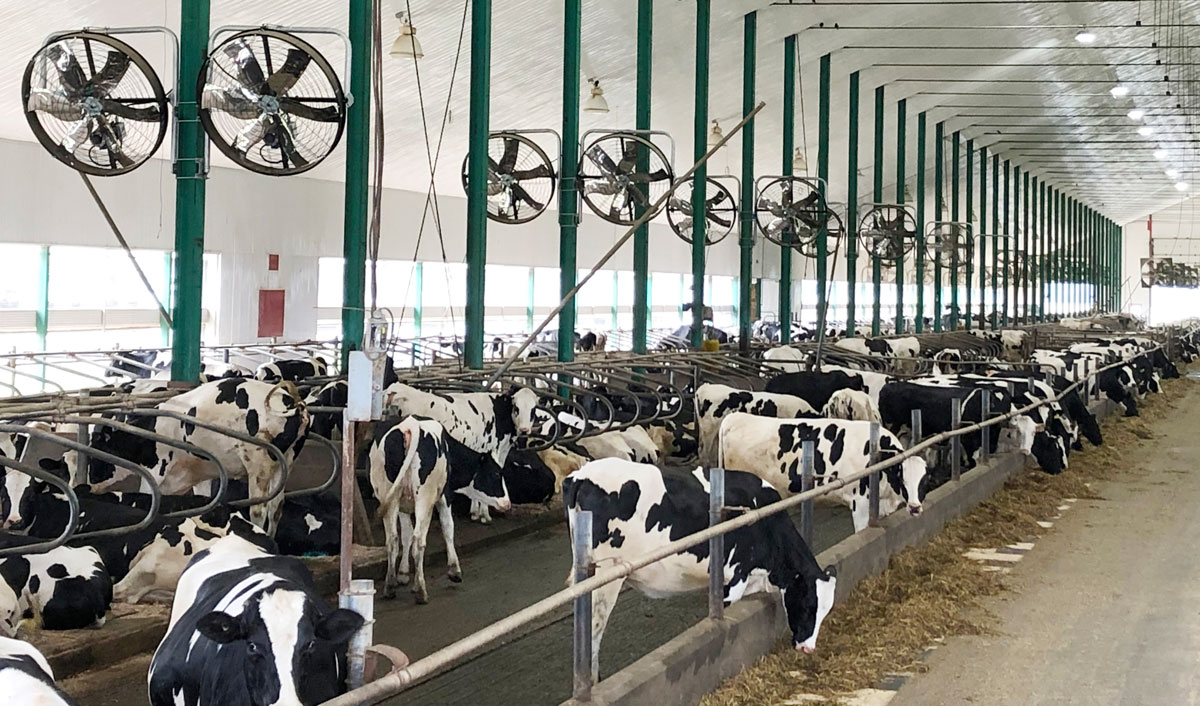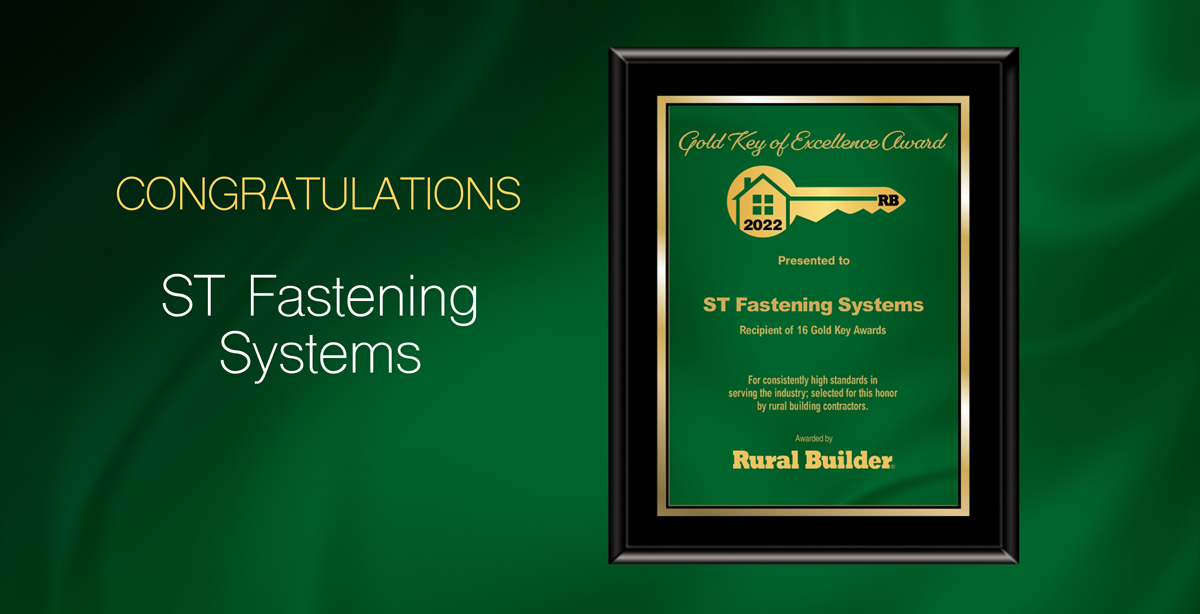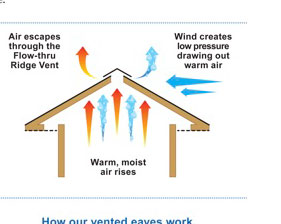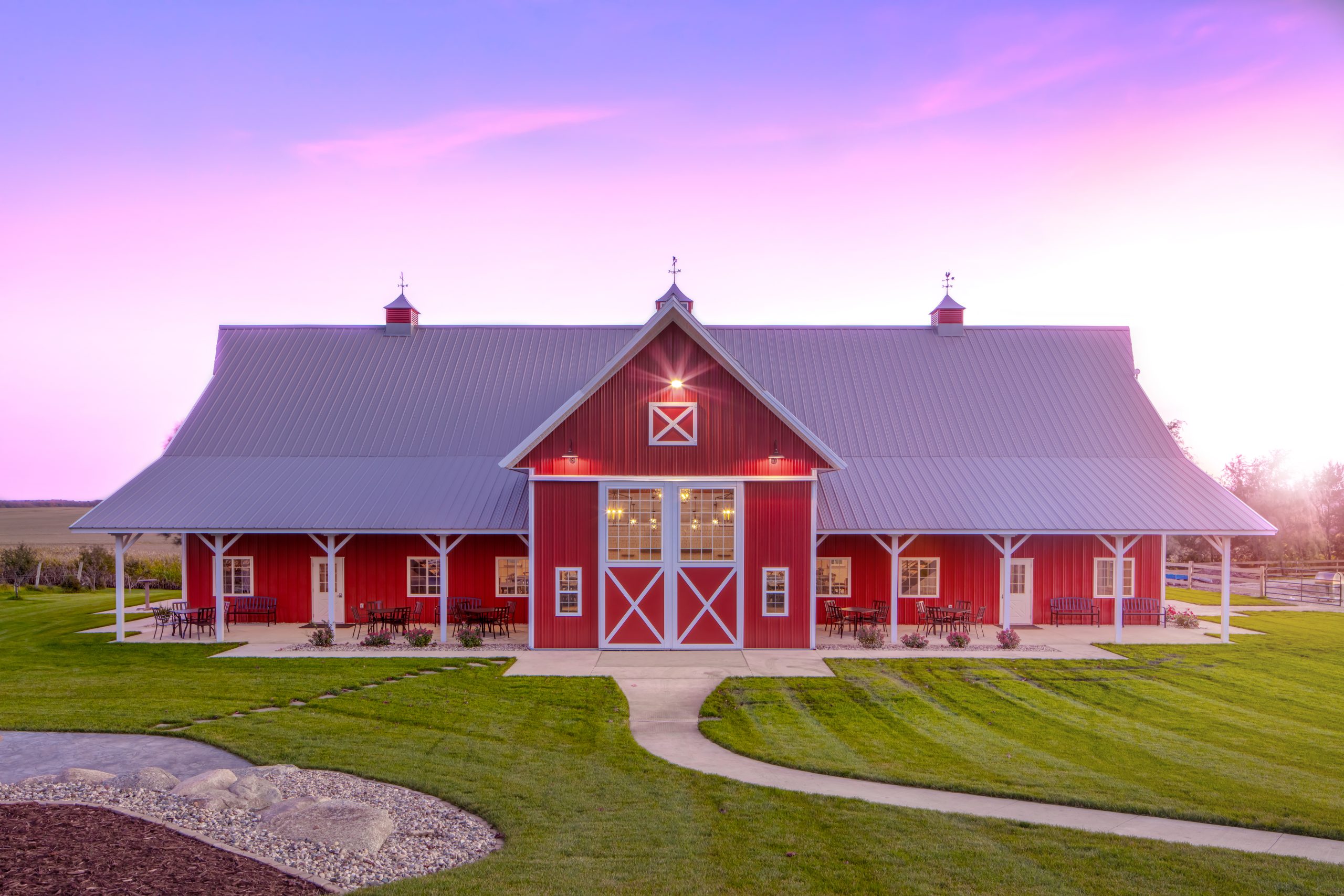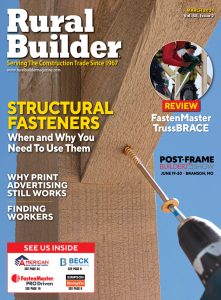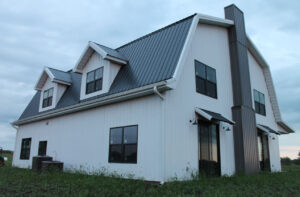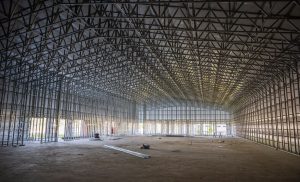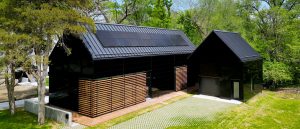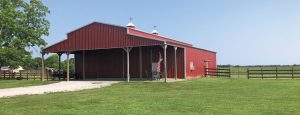By Mark Robins
Agricultural/rural building fans aid production, reduce energy costs, and improve air quality. Ventilating down, up, and out in all directions with fans keeps air fresh and helps people and animals feel more comfortable. Fans enhance ventilation in agricultural structures by removing stagnant air, humidity, and airborne pathogens while reducing the risk of mold and disease development. They lower the risk of heat stress and maintain temperatures for optimal crop growth and increased animal production. Increased airflow helps keep flies off animals and also keeps crop infestations at bay.
Fan Types
Pressurizing fans will force fresh air into the structure and aid in removal of heat, humidity, and noxious gases. Recirculation fans create airflow at various speeds depending on temperature and bring fresh air to the animal-occupied zone. Exhaust fans can remove heat, humidity, and noxious gases by causing a pressure differential between outside and inside the facility.
“High-volume, low-speed (HVLS) fans are one of the three main recirculation-type fans,” said Dr. Mike Wolf, consulting veterinarian, VES-Artex. “They come in various diameters and depending on the space to mount them will determine the diameter to be used. They destratify the air layers by mixing air vertically. Hot air tends to be high and cold air is low; this helps even out the temperature gradient. They also create velocity at the floor level, but the width of the pattern at floor level is easily disrupted by any objects or animals close to the floor. They can be run at variable speeds.”
Fans can be installed or portable. With a portable fan used for cooling, Nicholas Wilson, ventilation territory manager for Canarm AgSystems/Faromor said, “Most of the time, the producer will likely be behind the ball getting it in place and turning it on before an animal feels heat stress, ultimately affecting growth. When fans are permanently installed and wired with a thermostat, the thermostat triggers the moment heat reaches a point that could start the process of heat stress and eliminating future health problems.”
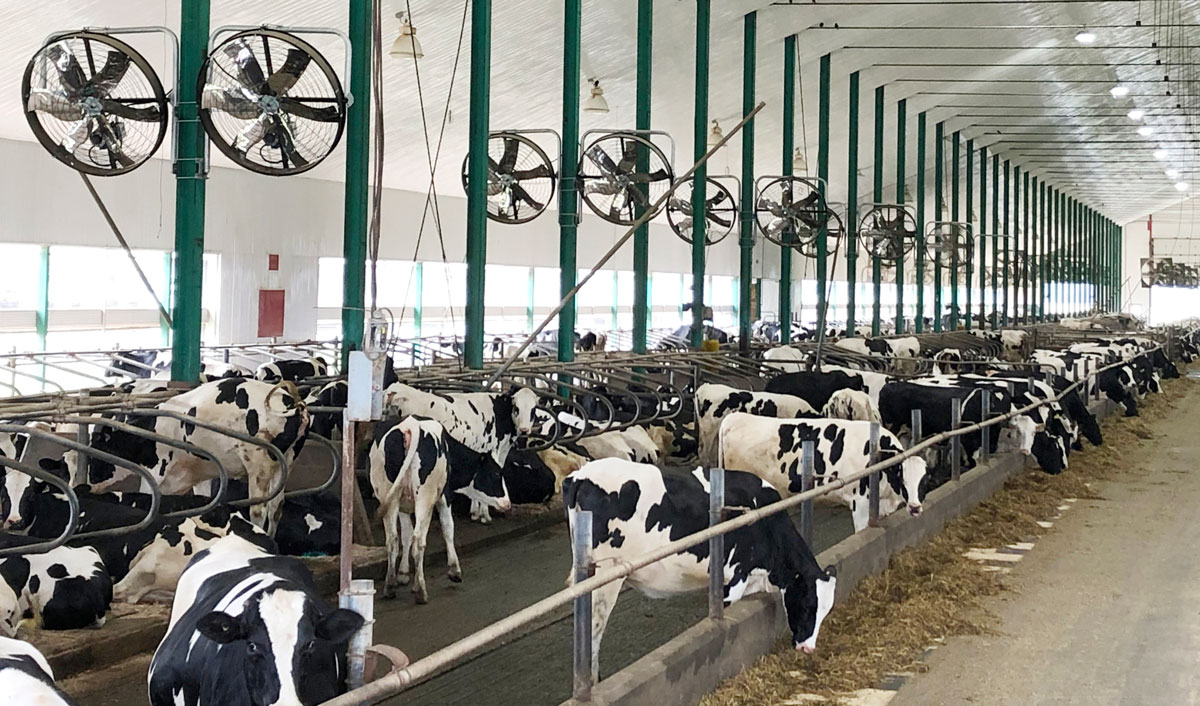
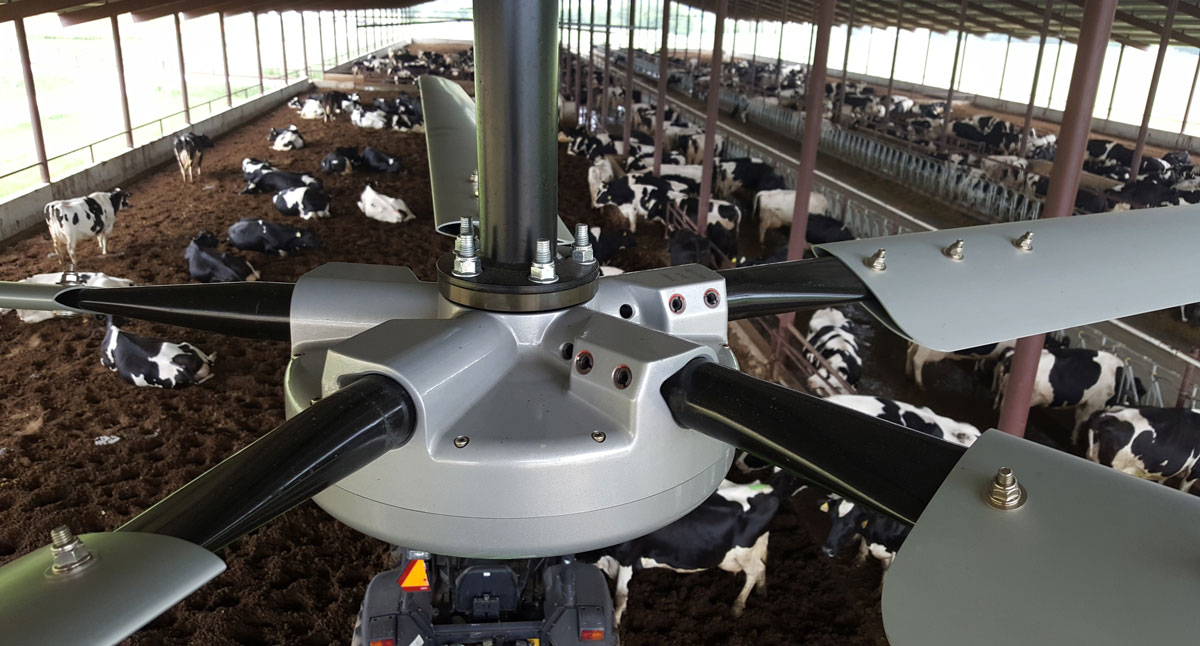
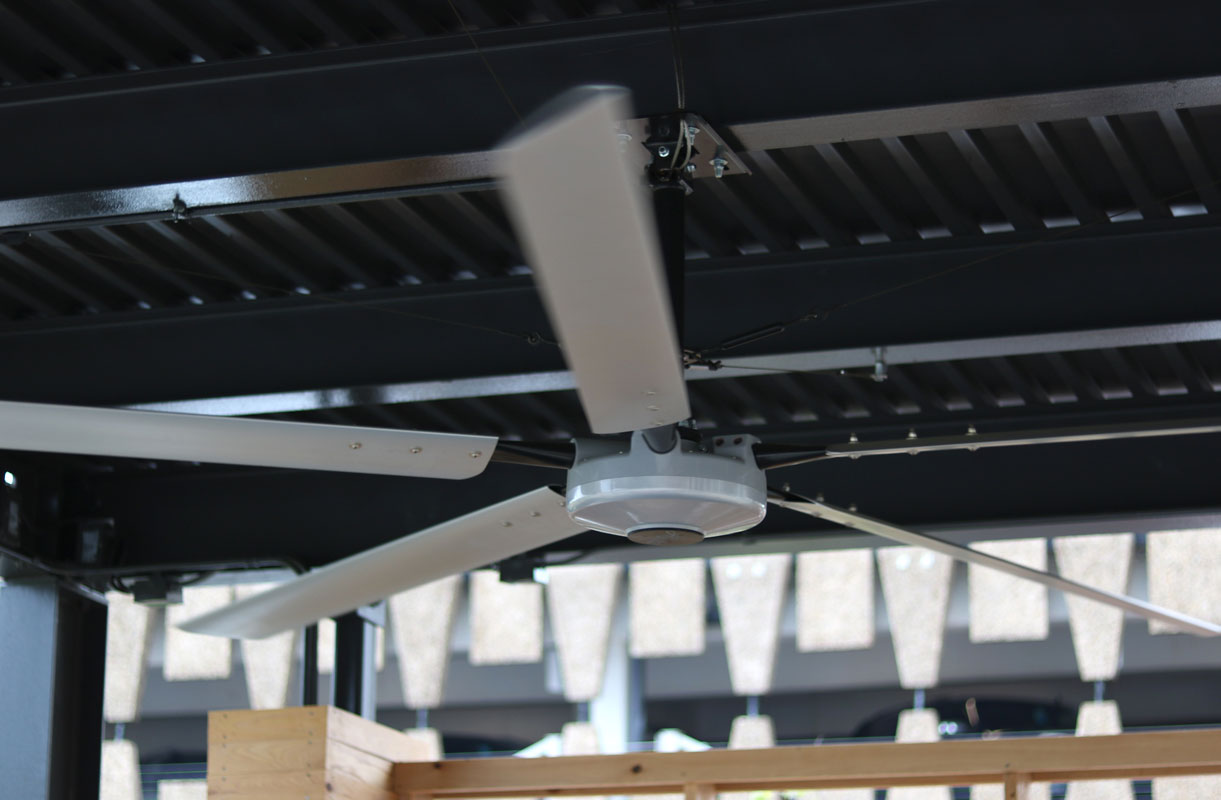
Michael Lavender, regional sales manager, at Hunter Industrial & Commercial said the major differences in fans for rural/ag buildings lie in their design and purpose. “HVLS fans stand out due to their ability to move large volumes of air at low speeds, providing consistent and gentle airflow with minimal noise. In contrast, circulation fans, like barrel fans, operate at higher speeds, creating a more targeted airflow and generating a lot of noise. Builders need to consider the size, layout, and purpose of the building when choosing between these fan types.”
Wilson cited a situation where he was group penning dairy cows. “We tend to use HVLS, as the downdraft and mushroom air pattern will fill a large open area. When looking at long rows of side-by-side stalls, a 54” panel fan every 50 feet would blow air directly across the back of the cows. The focus of circulation in dairy is for hot weather cooling. In a poultry building the size, shape and height of a building differs from other animal housing. We direct the air through the barn, creating velocity cooling and will also mix the air for equal heat spread in cooler weather.”
Installation Tips
Correct fan installation in rural/ag buildings involves strategic placement to optimize layout. Builders should also be aware of the type of building, size (including ceiling height), available power to operate selected fans, and application use. Lavender said to ensure successful fan installation, correct mounting heights and spacing is crucial. “Consulting with manufacturers or experts can provide valuable insights into the ideal fan configuration for specific agricultural settings.”
Wilson agreed that working with a reputable manufacturer or dealer will provide the builder with a plan for fan placement. He said the key is “keeping the job moving and getting to completion sooner. [This] is always better than waiting for your customer to choose fans and tell you where to place them.”
Fans selected for ag/rural applications must be mounted at OSHA required heights. “This height must not cause restriction of air flow to the fan’s inlet,” Wolf said. “The fan should be 1.5 times the fan’s diameter from any restriction to optimize intake flow. The structure must be capable of withstanding the additional weight to the roof members. Installation costs are generally lower for larger fans since fewer labor units are needed and wiring costs are also reduced.”
Upselling Fans
There are opportunities for rural/ag builders to upsell fans and general air movement. One of the most obvious is emphasizing the long-term cost savings and improved air quality that HVLS fans bring to agricultural environments.
“Improvements in energy-efficient motors, variable speed controls, and materials of construction are several ideas to consider,” said Glen Kelly, regional sales manager at Patterson Fan Co. “With the use of stainless steel, galvanized steel, and high-impact polypropylene housings, you can expect fans to perform better in harsher environments.”
Wolf said to best upsell fans, builders should know the purpose of the building because the ventilation options depend on this purpose. “Is it a farm shop that needs air exchange for noxious fumes in one area for painting or welding? Is it to redistribute HVAC throughout the worker zone? Is a heat exchanger needed to conserve HVAC energy? If it’s for animal housing, what type of animal species, breed, production purpose, age group, and anticipated numbers of animal units are to occupy the structure? Having a more complete equipment offering allows selling a package deal. It is highly advisable to work with a reputable equipment supply company that understands the type of building you intend to construct. Understanding where it’s located, local weather conditions, and how the barn is oriented will affect ventilation challenges and solutions.”
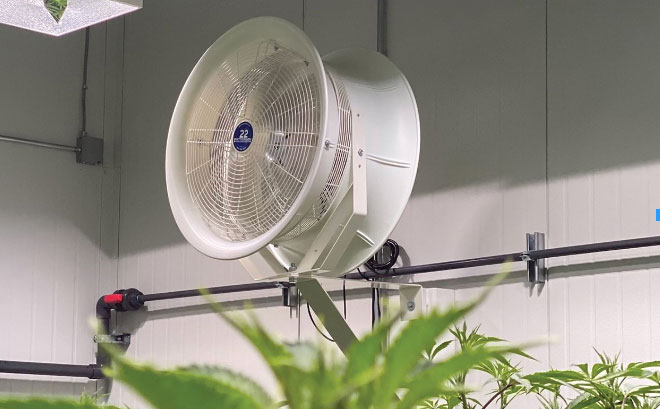
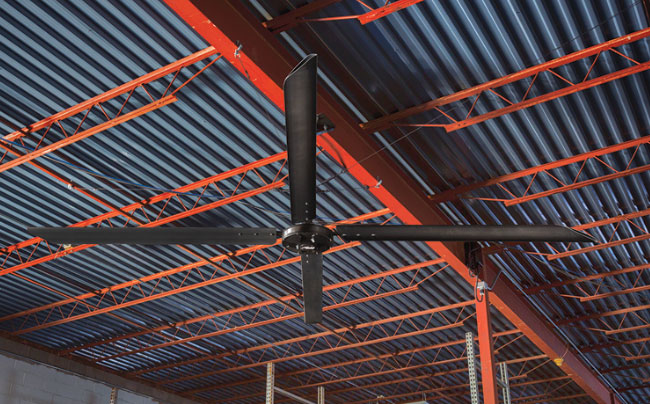
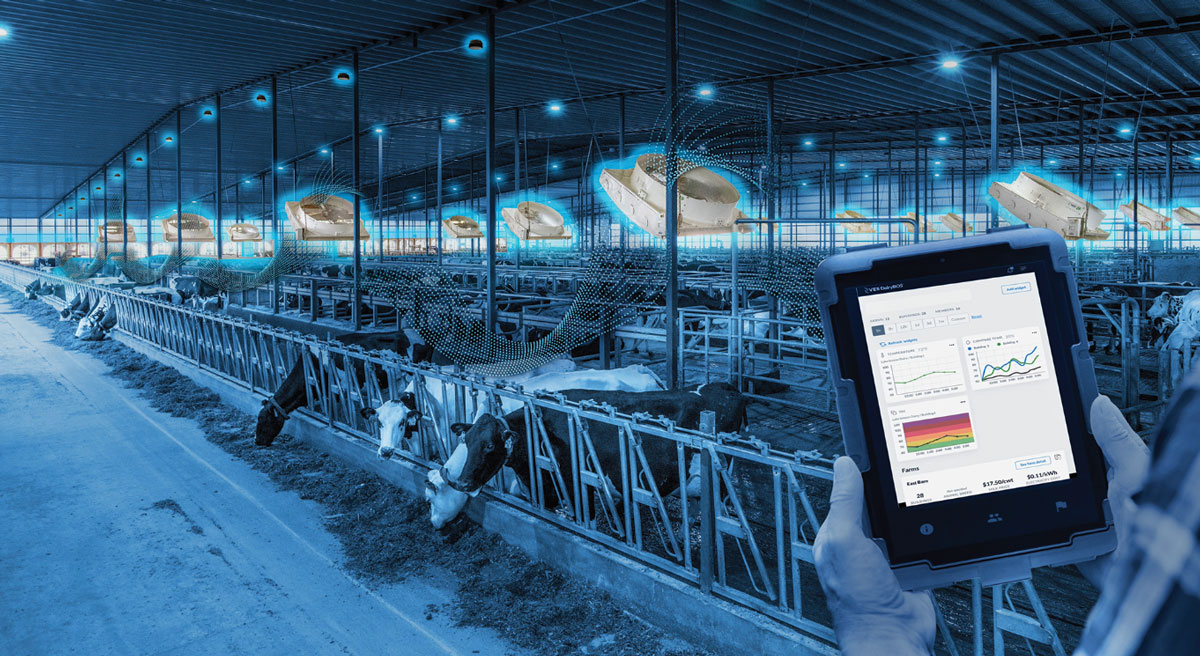
Wilson said include a complete ventilation package in your building proposals. “Including circulation fans can elevate your company to turnkey operation status. When you connect with a manufacturer or dealer to help properly size any ventilation system, your building proposal can increase and reduce stress to the customer who will inevitably have to pick a ventilation system at some point anyway.”
Showcasing fan advancements is a way to upsell. Kelly said recent fan developments are the cost and availability of variable speed motors and controllers. “This allows the fans to be controlled and operated at a desirable speed to meet certain application requirements, such as maintaining a specific humidity level in the space.”
Wolf agreed the movement to direct drive DC motors, which eliminate belts, pulleys and tensioners, is an important design advancement. “[This] greatly reduces maintenance costs; higher motor efficiencies are common. Sophistication of control units is becoming necessary but at lower costs.”
Advancements in smart fan technologies with automated controls offer improved energy efficiency. These innovations address the challenges of temperature control, ventilation, and energy conservation in rural/ag buildings. The trend toward sustainable and eco-friendly solutions is gaining momentum, with fans designed to reduce energy consumption and environmental impact. Lavender said his company’s HVLS fans have intuitive controls that allow users to manage a network of fans all from one location, and automatically adjust for temperature changes.

Older ag fans that have had years of wear and tear negatively affect efficiency and create much higher energy costs. When fans cease to operate properly and safely, you’ll want to replace and then upsell them. “It’s always good practice to re-evaluate the use of the space, in case any changes have occurred within your facility, to select the best fan for that application,” Kelly said. “We recommend hiring a qualified electrical or mechanical contractor to perform the replacement work. Fans that are 30-plus years old should be replaced with equipment that has become more energy efficient.” RB
Resources
Canarm AgSystems/Faromor
Brockville, Ontario, Canada
(800) 267-4427
Hunter Industrial & Commercial
Smyrna, Tennessee
(844) 591-3267
Patterson Fan Co.
Blythewood, South Carolina
(803) 691-4750
VES-Artex
Chippewa Falls, Wisconsin
(888) 622-2999


